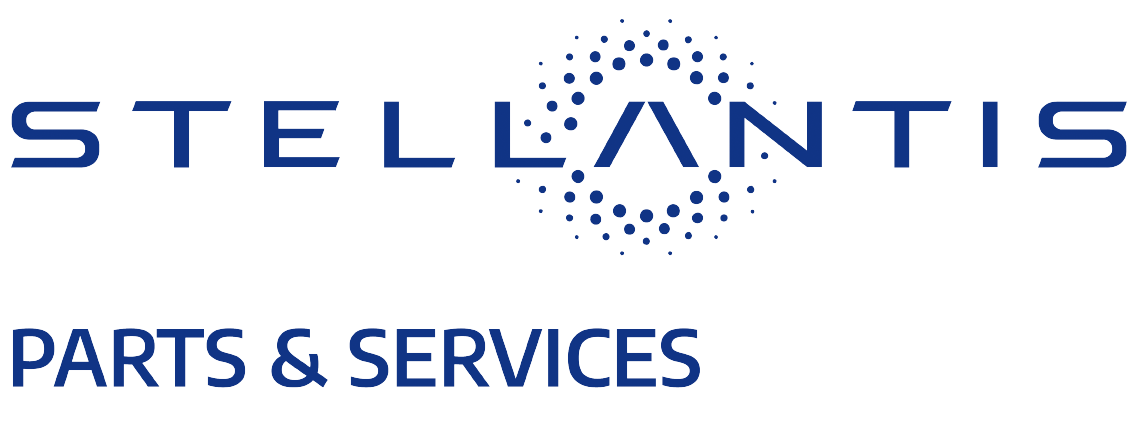Sign up for the newsletter
Sign up for the Stellantis Communications Newsletter and stay updated on all the news.
15 Feb 2013
Peugeot at the Geneva International Motor Show World premiere of the 2008 and environmental offensive
On its stand at the 83rd Geneva Motor Show, Peugeot is unveiling the advantages of its product and technological offensive. The Marque is using the event to world premiere the 2008, displaying an ambitious 208 range, reaffirming its move upmarket strategy and demonstrating its inspiration with the Onyx Concept car. The HYbrid4 diesel hybrid, the 2008 HYbrid Air and the 208 HYbrid FE project confirm its technological and environmental lead.
Among the 31 production vehicles and concept cars on display over the 2,700m2 of the Peugeot stand in Geneva, the 700,000 visitors expected will be able to discover, in the 2008 area, no fewer than seven versions representative of the launch range of the Marque's new urban crossover.
Peugeot 2008: the urban crossover for the international market
In Europe, China and Latin America engineers and stylists have worked together to create the 2008 urban crossover, which combines the Marque's expertise in the City Car segment and its acknowledged know-how in the Crossover segment, demonstrated by the success of the 3008 of which 440,000 have already been sold.
An innovative vehicle in the B segment, the 2008 is destined to win over customers on three continents, contributing to the Marque's dynamic of internationalisation which in 2012 saw renewed acceleration.
The 2008 is a compact crossover (4.16m), agile and versatile, with a refined style and striking character, intended for young city-dwellers in Sao Paulo or Shanghai, Paris, Kuala Lumpur or Moscow, each who love the city - but also love escaping from it, reconciling driving pleasure and protection of the environment.
In keeping with the dynamism of its profiled silhouette, the 2008 conceals under its bonnet engines of the latest generation with particularly low fuel consumption: with its e-HDi diesel and 3-cylinder petrol engines, Peugeot's urban crossover stands out from the competition with CO2 emissions starting at 98g/km.
The 2008 is the expression of Peugeot's strengths, already widely acclaimed by 208 customers: athletic design, new driving experience due to the small steering wheel and head up instrument panel, high level of comfort combined with benchmark handling, quality of the materials and finishes.
The 2008 is presented in a unique and energising coppery orange colour emphasising the identity of the crossover. Its colour, designed on a chrome base, echoes the personalisation range which will be offered to customers in an intense orange livery and Peugeot's contemplation of innovative colours and materials.
The 2008 will be produced as close as possible to its customers, in France (Mulhouse) first, then in China and Brazil.
208: an increase in power
After the historic success of its predecessors, in 2012 the 208 redefined the attributes of its segment, with a single objective: to take the lead in the B segment hatchback category in Europe.
In December 2012, just a few months after its launch, the heir of the Peugeot 2-series did in fact take 1st place in the hotly fought B segment hatchbacks category in Europe.
Produced in France and in Slovakia, launched in Europe in spring 2012, in the second half of the year the 208 continued its international deployment which will culminate in 2013 when it goes on sale in Russia and sees its industrial and commercial launch in Brazil.
Since its launch, the 208 has already won more than 220,000 customers worldwide.
A few weeks from their launch, the 208 XY - an exclusive and urban chic vehicle - and the 208 GTi - which brings a legend back to life - are on display at Geneva, and the jewels of a now complete 208 range. With three-door body styles, strong exterior identities, distinctive headlight signature on their front face, exclusive 17" wheels, sophisticated working of the materials and colours, special interior ambiances: even before the ignition is switched on the 208 XY and 208 GTi are expressed with a sculpted, athletic and elegant Peugeot style, and both have the ability to turn heads.
Driving pleasure will always be a given.
The 208 XY offers powerful and economical petrol and e-HDi diesel engines with outputs between 92 to 155bhp. For the 208 GTi, its chassis can comfortably handle the full potential of the 1.6-litre THP 200bhp engine coupled with the manual gearbox with six close-ratio gears and impressively with CO2 emissions of just 139g/km.
In its rally and track competition versions, the 208 is receiving an exceptional commercial reception and has already achieved successes, with a double at Monte Carlo 2013 in its class with the 208 R2.
A new chapter begins in Geneva for the 208 complying with the R5 regulations, glimpsed at the Paris Motor Show. The sporting genes of the Marque can now also be seen in its name: 208 T16.
Intended to succeed the 207 Super 2000, the 208 T16 is currently building up test miles with the aim of establishing itself as a strong force for winning national and international titles.
Upmarket and exclusive driving experiences
The 2008, 208 XY and 208 GTi are new illustrations of the Marque's move upmarket strategy.
So, on the Peugeot stand in Geneva, visitors will be able to admire, with the RCZ, the re-styled Sports Coupé has already attracted some 50,000 enthusiasts since its launch in spring 2010.
The RCZ R Concept, with its matt black and copper livery, heralds the RCZ R, a symbolic version of intense sportiness which will be unveiled at the end of the year. The RCZ R will feature a new 1.6-litre THP engine with 260bhp, making it the most powerful production model in the history of Peugeot. Its efficiency will be a benchmark with a specific power among the highest in the world for a production vehicle - plus 160bhp/litre - with target CO2 emissions of …155 g/km.
With the promise of intense dynamic sensations, the RCZ R will benefit from bespoke suspension and wheels, combined with a Torsen limited slip differential.
HYbrid range: Peugeot's advantage
In 2012, the Marque took the lead in Europe in terms of CO2 emissions: the average emissions of its ranges reached 121.6 g/km, compared to 128.6 in 2011, exceeding by far the European commitment of 130g/km by 2015.
The Marque's environmental policy is demonstrated by constant optimisation of the internal combustion engines (with improvements of efficiency, downsizing, Stop&Start e-HDi, etc.) and the introduction of new generation engines like the family of 1.0-litre and 1.2-litre three-cylinder petrol engines.
To achieve the goal of average CO2 emissions of just 116g/km by 2015, Peugeot has started to move towards breakthrough solutions, like electric vehicles, including the iON city car which will soon be joined by the PARTNER Electric.
Another important illustration of Peugeot's leading environmental stance and range enhancement is the diesel-electric hybrid technology with HYbrid4: the HYbrid4 drivetrain, unveiled as a world premiere on the 3008 HYbrid4 then deployed on the 508 RXH and 508 Saloon HYbrid4, sees Peugeot offering an innovative range in terms of practical and environmental performance with strong driving sensations. The three HYbrid4 models have already won more than 20,000 customers.
With a combined power output of 200bhp from the 2.0-litre HDi 163 FAP engine driving the front axle and a 37bhp electric motor on the rear axle, the HYbrid4 models produce a new driving experience through the choice of their four driving modes (Automatic, ‘ZEV’, Sport and 4WD) with CO2 emissions from just 88g/km.
But Peugeot is continuing to innovate.
With the HYbrid Air technology, a key step towards the goal of 2l/100 km, Peugeot again establishes itself as a pioneer. The 2008, a model for the international market, is the natural medium for this new drive train which combines a petrol engine and compressed air in a technology with limited costs which can be applied to the private vehicles and light utility vehicles of the B and C segments and be accessible to the maximum number of people across five continents.
The 2008 HYbrid Air combines two energies to achieve the highest efficiency in various situations: the compressed air resulting in particular from the recovery of energy on braking and deceleration will assist or take the place of the latest generation 3-cylinder petrol engine during the phases of highest consumption - moving off and acceleration.
Consisting, as regards the pneumatic part, of a high pressure tank in the central tunnel, a low pressure tank at the rear suspension and a motor/pump assembly installed on the transmission, the HYbrid Air drive train leaves the occupant space and modularity of the vehicle unchanged and is made visible to the driver by three operating modes: Air (ZEV), Petrol and Combined.
With the 208 HYbrid FE, Peugeot and Total, partners since 1995, bring together the best of their expertise and undertake an ambitious challenge which must reconcile breakthrough emissions and driving pleasure: The 208 HYbrid FE will emit just 49g/km of CO2 - i.e. two times less than the very efficient 208 1.0-litre VTi - but will accelerate from 0 to 62mph / 0 to 100km/h in 8.0 seconds – almost as quick as the 208 GTi …
It is an extreme concept but one that Peugeot intends to use as the basis for its technological development for tomorrow's vehicles.
Several directions will be followed: optimised aerodynamics, weight reduced by 200 kg thanks to the extensive use of composite materials and polycarbonates, petrol hybrid drive train combining a 3-cylinder petrol engine and its piloted gearbox with an electric motor and a battery which are the result of experience in Endurance competitions and special engine lubricants developed by Total Lubricants. The 208 HYbrid FE will be equipped with composite suspension and wheels while the special tyres and wheel rims will reduce rolling resistance.
Onyx: inspiration
In the great tradition of the Marque's super-cars, the Onyx will not fail to capture the imagination of visitors to the Geneva Motor Show.
Under its radical and sculpted silhouette of 4.65m, seated on 20" wheels, the Onyx hides the heart of an athlete: fixed on the carbon shell, the V8 HDi 3.7-litre 600bhp hybrid engine in a rear central position, the 6-speed sequential gearbox and the suspension are the result of the exacting savoir-faire of competition at the highest level.
The bodywork stands out with the contrast of its materials and colours: pure copper for the wings and doors, matt black carbon for the other body panels.
Framed by the aluminium arches, the ‘double-bubble’ glass roof reveals the carbon structure and an innovative passenger compartment, a pod formed from a taut piece of felt: so, the occupants become one with a uniform part. With the Onyx, Peugeot continues its contemplation of materials: this is the case with the ‘Newspaper Wood’, produced from compressed used newspapers, from which the dashboard and centre console are made.
Press contacts
www.peugeot-pressepro.com
Other content




























